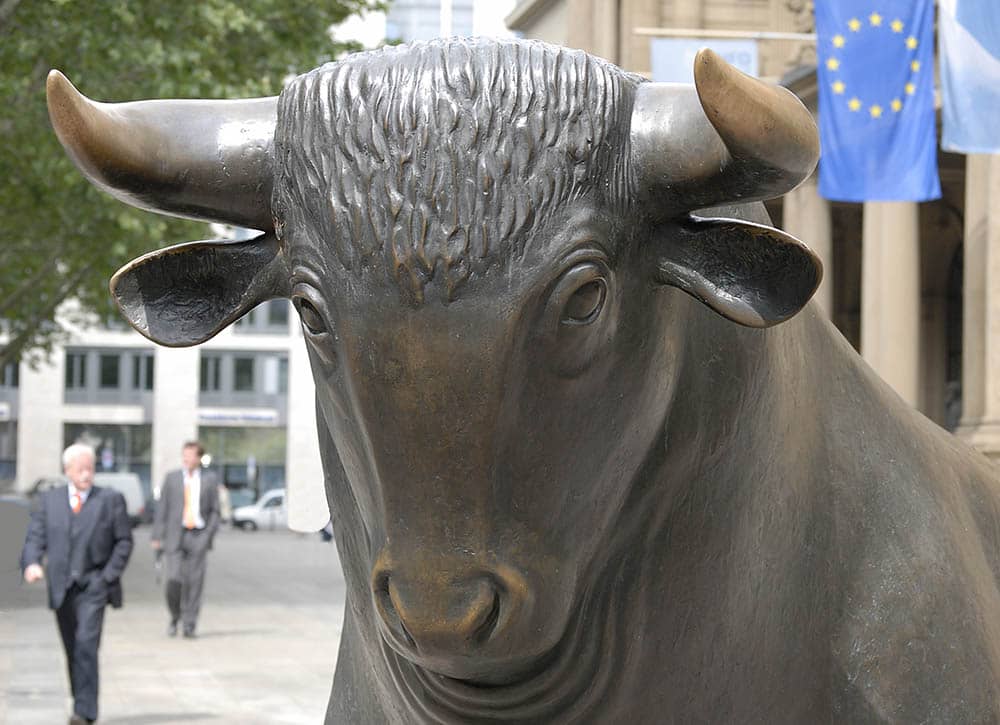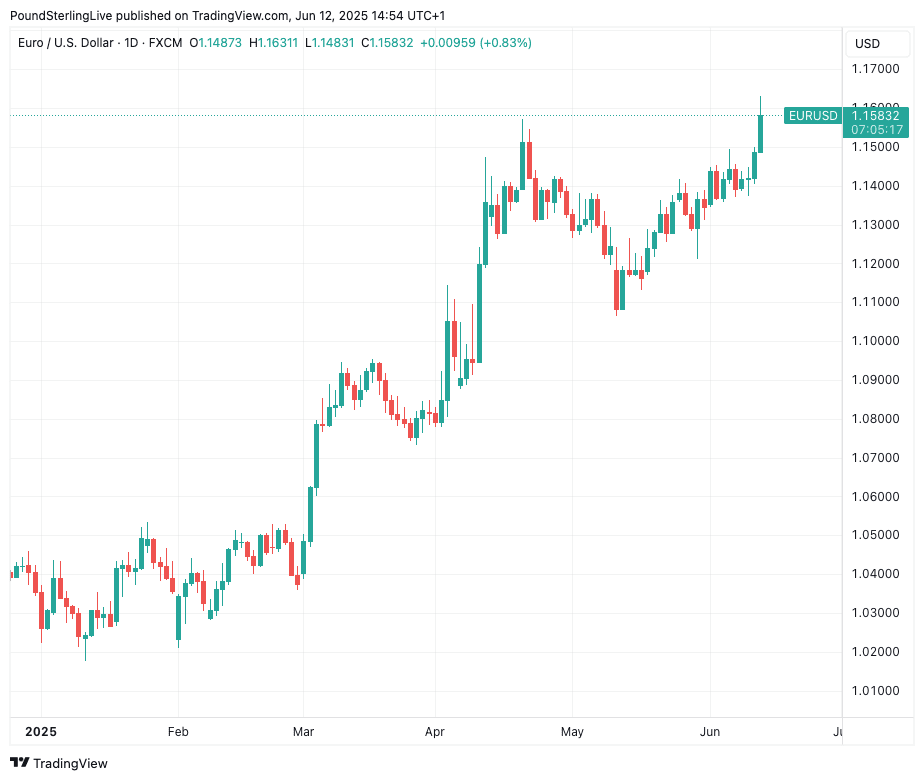Euro-Dollar Hits 3.5 Year High
- Written by: Gary Howes

Image © Adobe Images
Euro to Dollar exchange rate reaches 1.1592, the highest level since November 2021.
President Donald Trump said the U.S. would proceed with the imposition of 'Liberation Day' tariffs on the majority of U.S. trading partners.
He said a letter would be issued to countries that have been unable to negotiate a new deal within two weeks, meaning the tariffs would come into effect for most on July 9.
The news hit the Dollar as it revived the "sell America" trade, with the Euro fulfilling its role as the preferred alternative.
"EUR/USD pierced the previous YtD high at 1.1573 to change hands above 1.16 for the first time since October 2021. We stick to our buy-the-dip call with medium-term target at 1.2349," says Mathias Van der Jeugt, an analyst at KBC Markets.
The U.S. is still negotiating with its major trade partners, but is unable to negotiate with everyone due to capacity restraints.
Trump isn't willing to wait.
He also announced that the U.S. will maintain an "effective" 55% tariff on Chinese imports, while U.S. exports to China will be subject to just a 10% tariff.
This puts a dampener on the positive headlines that emerged from China-U.S. trade negotiations held in London earlier this week.
It all speaks of a higher U.S. tariff burden, which will raise the cost of U.S. imports, which are heavily subsidised by consumers who end up paying more for the goods.
Above: EUR/USD at daily intervals.
Although inflation data is not yet reflecting higher costs, economists say price rises are incoming.
"Our wait for tariffs to raise retail prices will eventually be rewarded," says Steven Blitz, economist at TS Lombard.
This speaks of a stagflationary environment in the U.S. economy, where rising prices meet slower growth. Because of the rising prices, the Federal Reserve will be unable to intervene in the economy by cutting interest rates, meaning businesses and consumers are going to have to ride out the shock.
The developments diminish U.S. exceptionalism in the eyes of international investors, in turn weighing on the Dollar.
The Euro, meanwhile, benefits as the go-to for rediverted flows, with the single currency benefiting from the relative policy calm in Europe.
At the same time, the prospect of a German fiscal stimulus is boosting sentiment towards Europe, promising a long-awaited economic revival.
Brent Donnelly, an analyst at Spectra Markets, reminds us that the Euro has other positives in its corner:
- ECB loudly declaring they are done cutting.
- Momentum towards mutualisation simmering in the background as the ECB and others tout the EUR as an alternative to the USD
- European pension funds increasing USD hedges as angst and animosity towards hostile U.S. policy increases.
- Massive defence spending increases lurk on the horizon.
- Eurozone stocks outperform U.S. equities after years of trailing.





